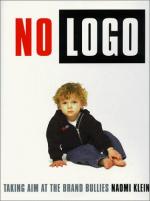
|
| Name: _________________________ | Period: ___________________ |
This test consists of 5 multiple choice questions, 5 short answer questions, and 10 short essay questions.
Multiple Choice Questions
1. Co-branding is seen as a win-win situation since the product and the _________ are both promoted at the same time.
(a) Melody.
(b) Activism.
(c) Message.
(d) Celebrity.
2. Many more people were buying __________ brands in order to save money during tighter times in the market.
(a) Popular.
(b) Genetic.
(c) Generic.
(d) Old.
3. ________ culture began in the ghettos, but then incorporated Nike and Hilfiger into the social climate over time.
(a) Hip hop.
(b) Urban.
(c) Jazz.
(d) Prep.
4. The fiercest battles are not between the products, but they are between the branded _________ that are constantly redrawing the borders.
(a) Mergers.
(b) Movies.
(c) Words.
(d) Camps.
5. According to the book, _________ is something which is becoming less and less of a reality in the world of capitalism.
(a) Savings.
(b) Competition.
(c) Peace.
(d) Diversity.
Short Answer Questions
1. ___________ not only has a number of different spin off channels, but it also offers shops which hold a full scale model of a T. Rex.
2. Klein points out that Cathedral Grove isn't a forest at all, but a _________ museum as it is not accessible to all.
3. Synergy's efficiency is not measured by the success of any one product, but on how well any one of the products _______ through the channels.
4. During the 1990s, the consumer became more _________ conscious than brand conscious due to the recession taking place.
5. Retailers who want to maintain a __________ venue might need to reject certain types of music, movies, etc.
Short Essay Questions
1. The activities of bundling services and items wasn't always the case, as anti-trust laws would have prevented these occurrences. During what era did the anti-trust laws become dismantled?
2. How does the company of Viacom benefit from its ownership of Blockbuster and Paramount Pictures?
3. How does synergy lead to outright censorship in the consumer market, though most are unaware of it?
4. What are some of the ways in which entire buildings can be used to help with branding campaigns?
5. Why don't consumers fail to realize the consolidation of the various business industries in their lives?
6. What can no media venue exist without, according to Klein's findings in this particular book?
7. What are some of the examples of brand extension possibilities which businesses began to explore in the 1990s?
8. What became commonplace in the public school systems as a result of the appeal of branding concepts?
9. What are some political ramifications of sponsorships in the eye of the public?
10. Why did brand names come to be in the market as companies continued to produce goods for consumers to buy?
|
This section contains 617 words (approx. 3 pages at 300 words per page) |

|




